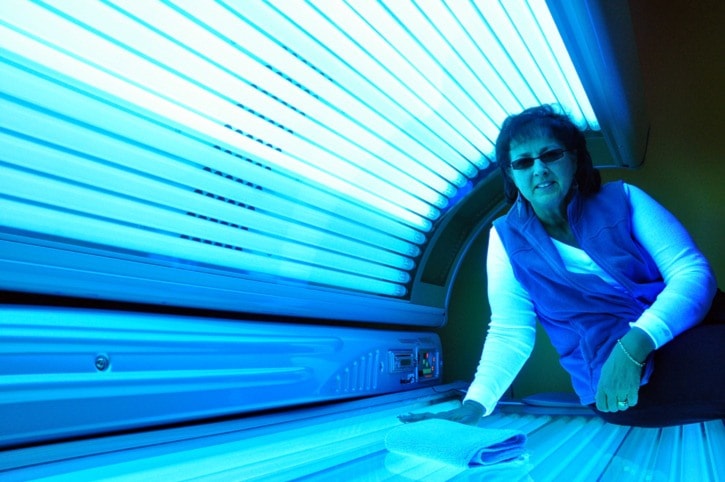Teens have been banned from using tanning beds in the Capital Region, but the debate leading up to the decision has slandered the industry and hurt business, says a Langford salon owner.
The Capital Regional District passed a bylaw on Jan. 12 forbidding teenagers younger than 18 from using tanning beds for cosmetic purposes, based on public input and a recommendation from Dr. Richard Stanwick, chief medical health officer for the Vancouver Island Health Authority.
One of the pivotal arguments cited is that risk of melanoma of the skin increases by 75 per cent when people start using tanning beds before age 35.
That data came out of the World Health Organization’s International Agency for Research on Cancer (IARC), which led to WHO recommending people under 18 not use tanning beds.
Marie Page, owner of Maya Sun Salons in Langford, argues the IARC report indicates the actual risk of developing melanoma from a tanning bed is 0.3 per cent, versus 0.2 per cent for people who don’t tan at all.
An analysis of the IARC report by health researchers and released by the Joint Tanning Association of Canada showed a six per cent increase in risk, not statistically significant, from using professional tanning beds.
The 75 per cent number is derived from averaging the increased risk from medical tanning equipment and home equipment, the report said.
Page agrees that one melanoma case is too many, but says that kind of cancer is rare in general and that citing a 75 per cent increase amounts to fear mongering.
“We don’t care about the (teenage) ban. It makes no difference financially to us, but it’s hard to run a business with that kind of information coming out,” Page says. “My concern is the negative perception of tanning. Under 18 is not the issue.”
Page pointed out that few teens use tanning salons — in seven years of business she’s had 27 customers under the age of 18, most who came in for a pre-tan before a vacation.
Page and other tanning business owners recommended the CRD ban people with skin that doesn’t tan and is at high risk of burning, known at Type 1 skin.
“Banning Type 1 skin types would hit the full population in terms of safety and would get rid of salons not doing things properly,” she says.
Stanwick said his main concern is the long latency period to develop skin cancer related to ultraviolet exposure. He acknowledged the debate at the CRD board table had “duelling statistics.”
“With melanomas, it may take 10 years to develop consequences. Most people see it 20, 30 or 40 years out,” Stanwick said in an interview. “The earlier you start (tanning), the earlier cancer will be present.
“Tanning beds were introduced in the 1980s and 1990s, and we are just now seeing the consequences of intensive tanning.”
He noted that young people younger are still growing and developing, and put themselves at greater risk when tanning. The UV intensity tanning salons offer is much higher than what Greater Victoria experiences and can be higher than what is seen in nature, Stanwick said.
“We’re not saying tanning isn’t available,” he says. “We are going after vulnerable children and youth. Kids are different than adults in terms of risk.”
Metchosin Mayor John Ranns, the single opposition vote at the CRD board, calls the age cutoff in the bylaw inconsistent with other laws regulating teenage behaviour.
He also points out this is the first CRD bylaw that regulates an activity that doesn’t directly impact the health of other people, such as with anti-smoking bylaws.
“We did tobacco bylaws based on third-party safety and to protect the general public,” Ranns says. “To me the weight of evidence wasn’t enough to justify a ban (on tanning). The evidence was ambiguous and the industry made good points not addressed by VIHA.”
As a middle ground and to be consistent with driving laws, Ranns tried to amend the tanning bylaw to people younger than 16. That was defeated at the board table.
“With tanning, if you do it wrong, many years down the road you may get skin cancer,” he says. “It’s not the same if you screw up when you’re driving.
“The question is where is this leading to? This bylaw ventures into new territory. It’s banning something for a person’s own good. It’s a slippery slope. We have to be very cautious.”
editor@goldstreamgazette.com
